Up Next
Finnish Artist Iiu Susiraja Tempers Humor With Honesty in Her Raw Self-Portraits, Now on View in a Star-Making Debut Show at MoMA PS1
"Iiu Susiraja: A style called a dead fish" is the artist's first U.S. museum show, on through September 4.
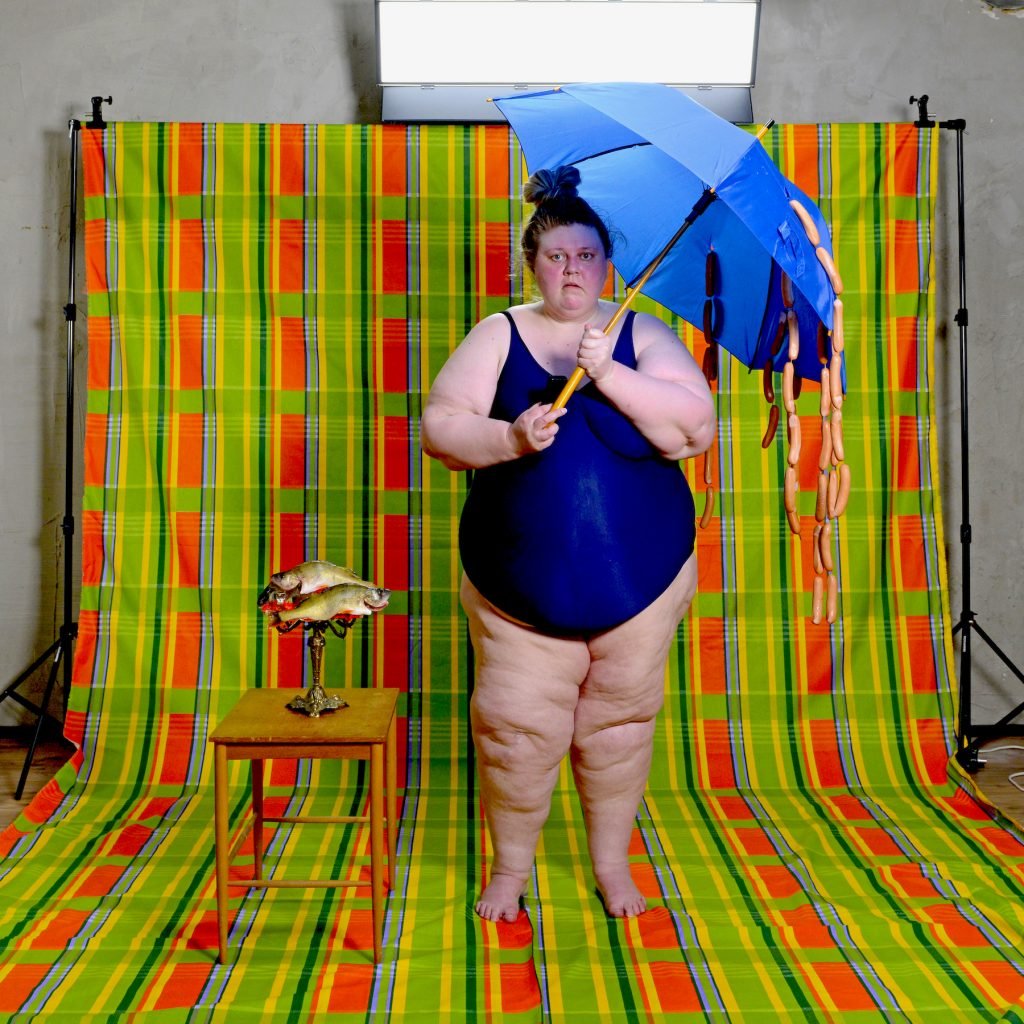
"Iiu Susiraja: A style called a dead fish" is the artist's first U.S. museum show, on through September 4.

Annikka Olsen

It is impossible to encounter Finnish artist Iiu Susiraja’s photographs neutrally. Despite their air of mundanity, the strange, often humorous collection of props, the artist’s own plus size body and pose, and the glimpses inside a typical residence together elicit immediate response—both conscious and subconscious. Many of Susiraja’s self-portraits feature the artist unabashedly nude or semi-nude, present with an array of distinct but importantly not unique objects, such as a string of sausages, a cellophane balloon, or an umbrella within the context of an otherwise ordinary home setting.
In a culture and society rife with both discourses and hot takes on beauty standards, social norms, fatphobia, acceptance, sex, and a litany of other themes pertaining to existence, the images compulsively call forth the viewers’ own social conditioning and subsequent cacophony of opinions and feelings. And this is where much of the work inherently resides, in the viewers’ ability to parse their own preconceived notions, gut reactions, emotional responses—and even prejudices.
In effect, the images are a site for the viewer to meet the artist halfway; the works do not invite or repel, but instead offer a vignette containing a unique balance of familiarity and absurdity for the viewer to enter and reflect—on the image as well as themselves.
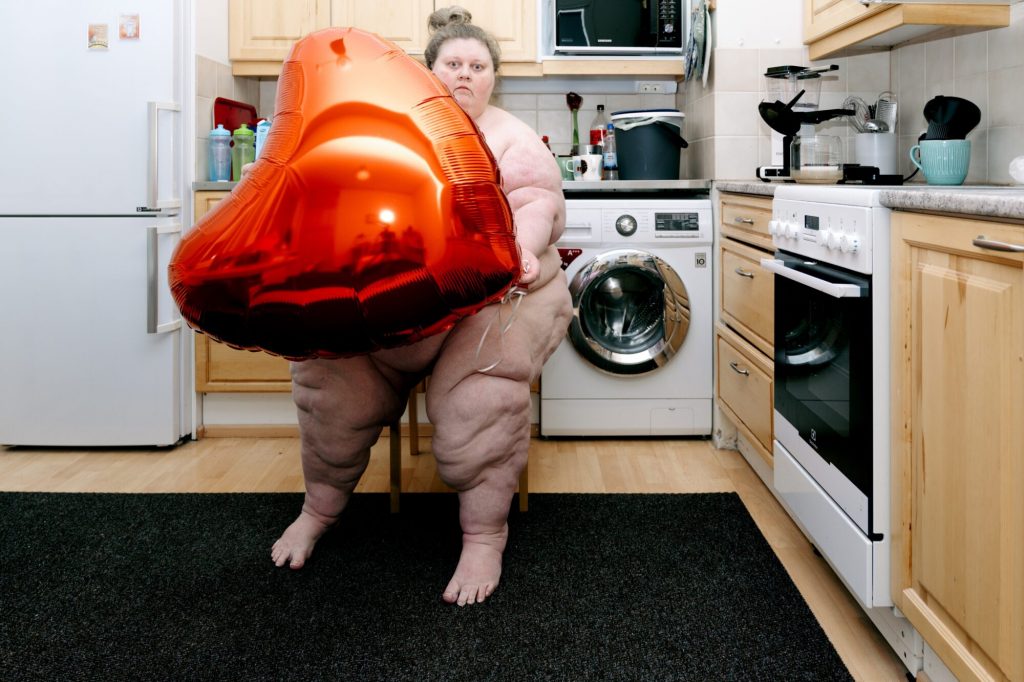
Iiu Susiraja, Happy Valentines Day (Big Heart) (2022). Courtesy of the artist, Makasiini Contemporary, and Nino Mier Gallery.
The inevitability of viewer response is somewhat ironic considering a hallmark of the artist’s self-portraits is the absence of overt facial expression, with Susiraja frequently looking out to the viewer from the photograph or video straight-faced and externally emotionless. Susiraja has described being expressionless as a type of “shield,” offering protection from what is truly intimate—her internal world—as well as ensuring she doesn’t influence what the viewer independently brings to the experience.
“The emotions on the face could be the key to something disturbingly deep. Disturbing for the viewer as well as for me,” the artist said. “Crying on the face would not give the freedom to look at the photo as each viewer wants. Crying would make everything clear right away. A little mystery is always good. The same goes for a smile. But, of course, there can be too much smile, so that is, for example, scary. I don’t want to lead things too much, interfere in people’s own territory.”
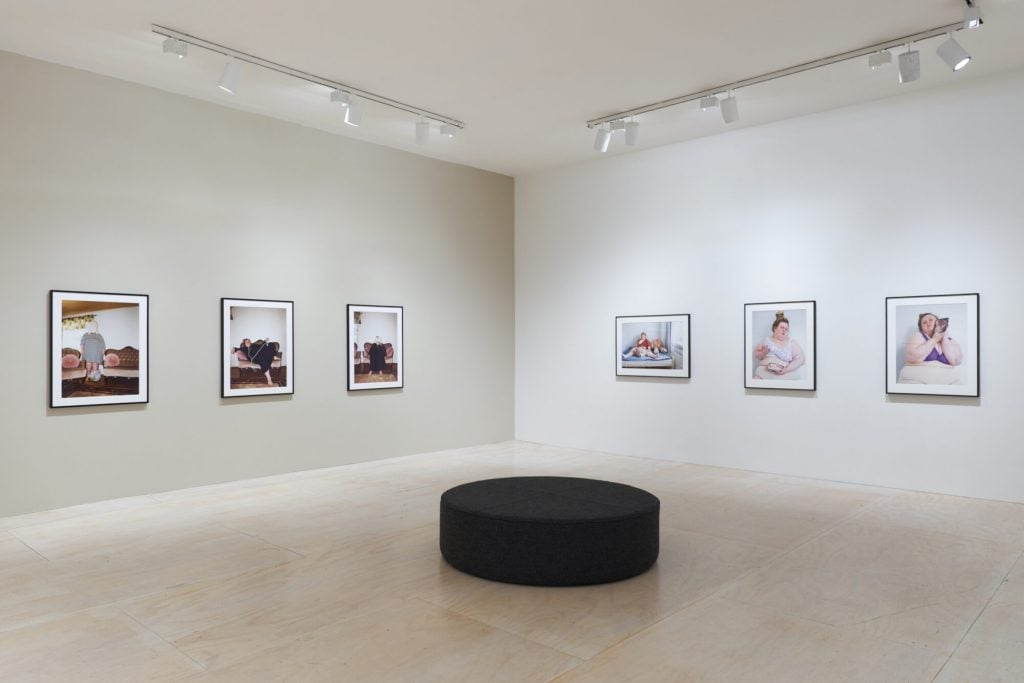
Installation view of “Iiu Susiraja: A style called a dead fish” (2023). Photo: Steven Paneccasio. Courtesy of MoMA PS1.
Originally from and still based in Turku, Finland, Susiraja (b. 1975) initially studied and worked in textile design before turning her attention to photography. Currently, Susiraja is the subject of her first solo museum exhibition in the United States at MoMA PS1 in Long Island City, “Iiu Susiraja: A style called a dead fish.” The show presents more than 50 photographs and videos from throughout her career starting in 2007, when she first began to photograph and film herself. Tracing the evolution of her practice, and the items she chooses to use, the show highlights Susiraja’s unique and wry humor—one that often leaves the viewer unsettled, and wondering if they are, in fact, in on the joke.
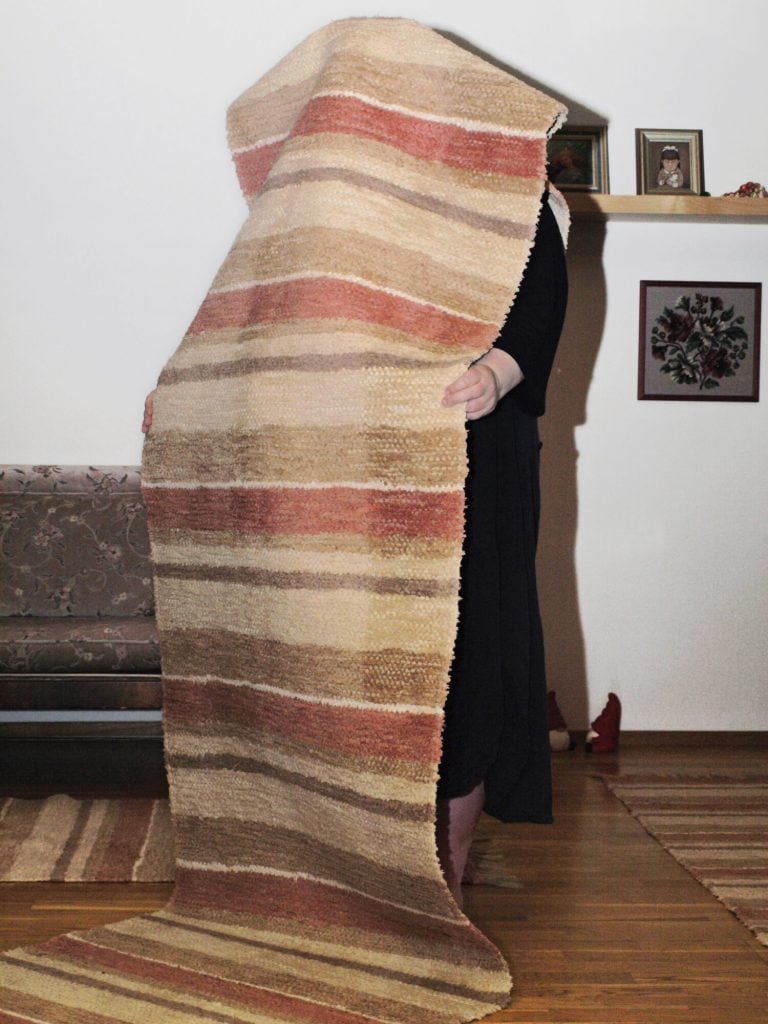
Iiu Susiraja, Large-scale cleaning (2008). Courtesy of the artist, Makasiini Contemporary, and Nino Mier Gallery.
Within the collection of works spanning more than 15 years, an element that stays consistent is the setting. Susiraja takes all her images within her own home or that of her parents’ home nearby. The ordinariness of these domestic settings can be considered as an extension of the ordinary objects she is pictured with; this is most apparent in images such as Large-scale cleaning (2008), where a flat-weave runner rug, presumably one that organically exists in the house, is draped over the artist’s head. The title offers a glimpse of Susiraja’s dry wit, as the “large-scale” could be interpreted as a reference to the overlong rug or Susiraja’s own body.
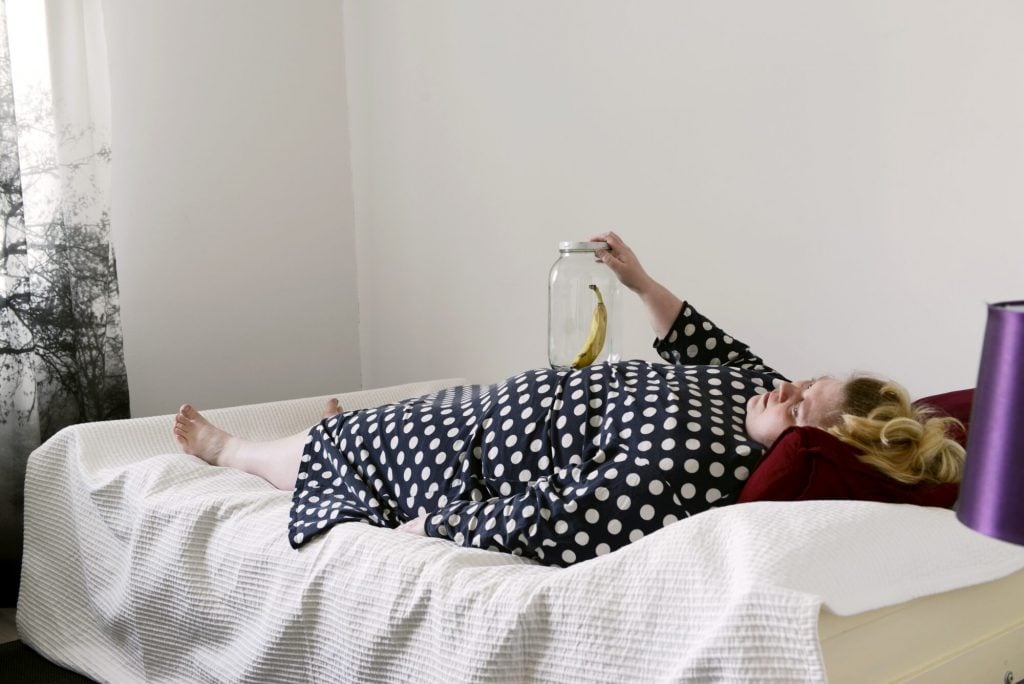
Iiu Susiraja, Functional communication (2012). Courtesy of the artist, Makasiini Contemporary, and Nino Mier Gallery.
The humor continues in works like Lucia (2010), where Susiraja sits with an electric candle tapped to her head, an irreverent and slapstick interpretation of the crown of candles traditionally worn by an eldest daughter for Lucia Day in Scandinavia.
Elsewhere, Functional communication (2012) shows the artist lying supine and gazing at a banana in a jar. The mood of the image is decidedly quiet, reflective, emanating solitude. The title refers to a form of communication meant to express or meet a need, yet the artist communing alone with a fruit conveys humor and sadness simultaneously.
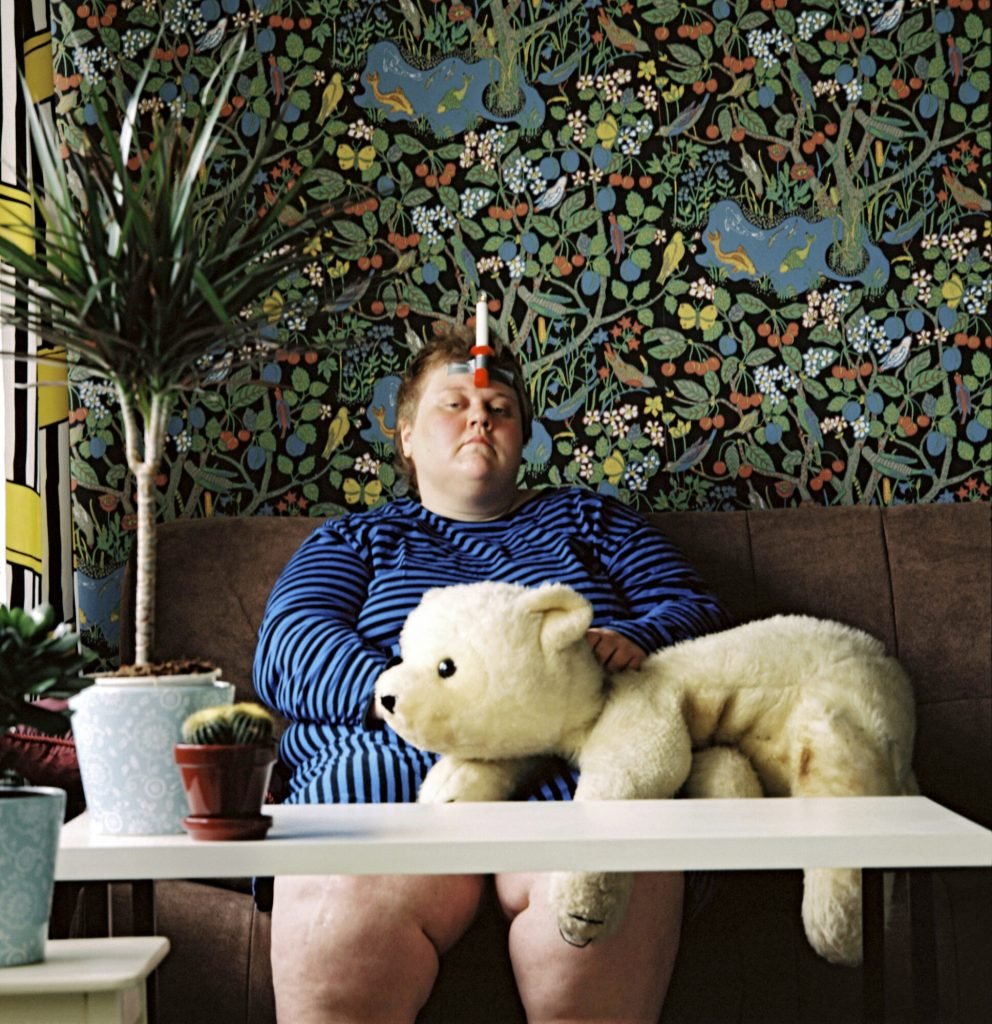
Iiu Susiraja, Lucia (2010). Courtesy of the artist, Makasiini Contemporary, and Nino Mier Gallery.
The choice of a runner rug or a fruit or an electric candle or any number of seemingly random everyday objects relays an artistic process that is nearly as deadpan as the artist’s expression in her self-portraits. She first writes a list of items she wants to use, collects them, and then takes the picture (also, as she does not use any type of artificial studio lighting, a quick check of the weather is factored in to make sure it will be sunny enough). When queried about the list that starts everything off, functionality and recognizability of object are apparently the only real defining parameters.
Susiraja said: “It’s just a list, like a shopping list. The brain automatically blocks objects that are not easily recognizable or do not have a basic shape. An example is smoking. E-cigarettes are not a timeless item, not a classic. The pipe is not so commonly used. So, the choice would be a regular cigarette.”
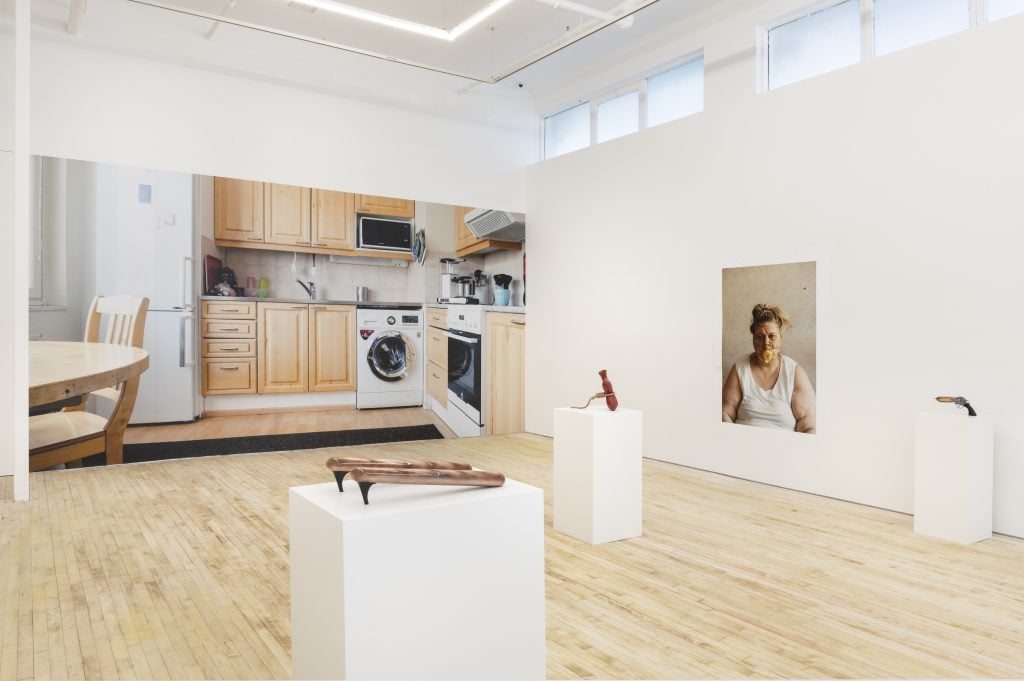
Installation view of “Iiu Susiraja: Hot Stuff” (2023). Photo: Adam Reich. Courtesy the artist and Nino Mier Gallery.
Earlier this summer, Nino Mier Gallery in New York presented “Hot Stuff,” a solo show of Susiraja’s work featuring, like the exhibition at MoMA PS1, a range of the artist’s signature staged self-portraits and videos, as well as a series of recent sculptural works replicating the quotidian objects that frequent her photographs. The sculptures, made of painted PLA plastic, emphasize the importance of ordinary objects in her practice for their ordinariness (whether in spite of or because of), and also illustrate Susiraja’s penchant for puns and dark humor. Slim (2022) features a hot water bottle with a noose tightening its middle, and Heelbread (2023) portrays a pair of baguettes with heels from a pair of pumps.
From a purely categorical standpoint, parallels could be drawn between Susiraja’s work and that of Cindy Sherman, who similarly works at the intersection of self-portraiture and staged photography. But unlike Sherman, Susiraja eschews any character-building. Looking at one of Susiraja’s self-portraits, the mind of the viewer immediately tries to make sense of what is happening, searching for narrative or an internal logic that might explain what is taking place and why various objects are in frame. The various elements of Susiraja’s work are not so easily reconciled, and she resists playing a part or creating a character.
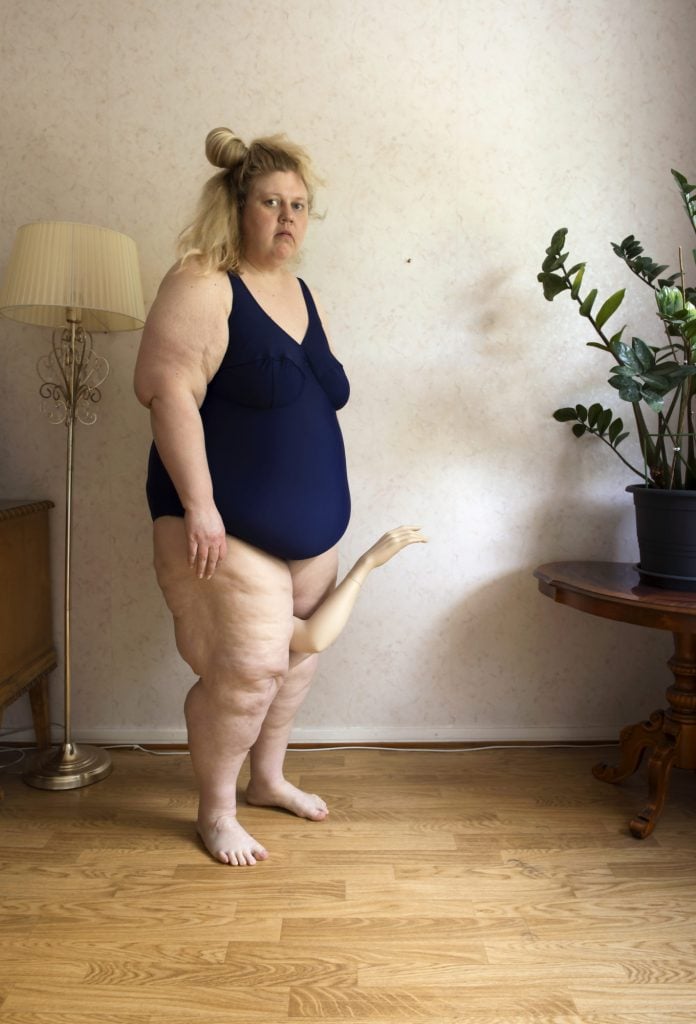
Iiu Susiraja, Handshake (2017). Courtesy of the artist, Makasiini Contemporary, and Nino Mier Gallery.
“The roles are somehow related to lying,” said Susiraja. “I was brought up to always try to tell the truth. And I love the truth! A lie is worthless and useless. A lie is fake money that can be thrown away. On the other hand, some keep the wrong money and let the damage go around. These people do not know that the truth includes the possibility of peace and experiencing freedom. The role, I think, makes the symbolic reading difficult, because ‘role’ is a lie.”
Truth and interconnectedness are core elements of Susiraja’s photographic pursuits. Stripped (often literally) bare of codified hierarchies of meaning or narrative, interpretation of her work is a tide that vacillates between a shore of humor and wit, and a sea of poignant, sometimes even harrowing, emotions. The tone and mood of the work, however, ultimately resides in the viewers’ participation, exploring how the artist’s strange yet relatable scenes affect them on a deeply personal and psychological level.
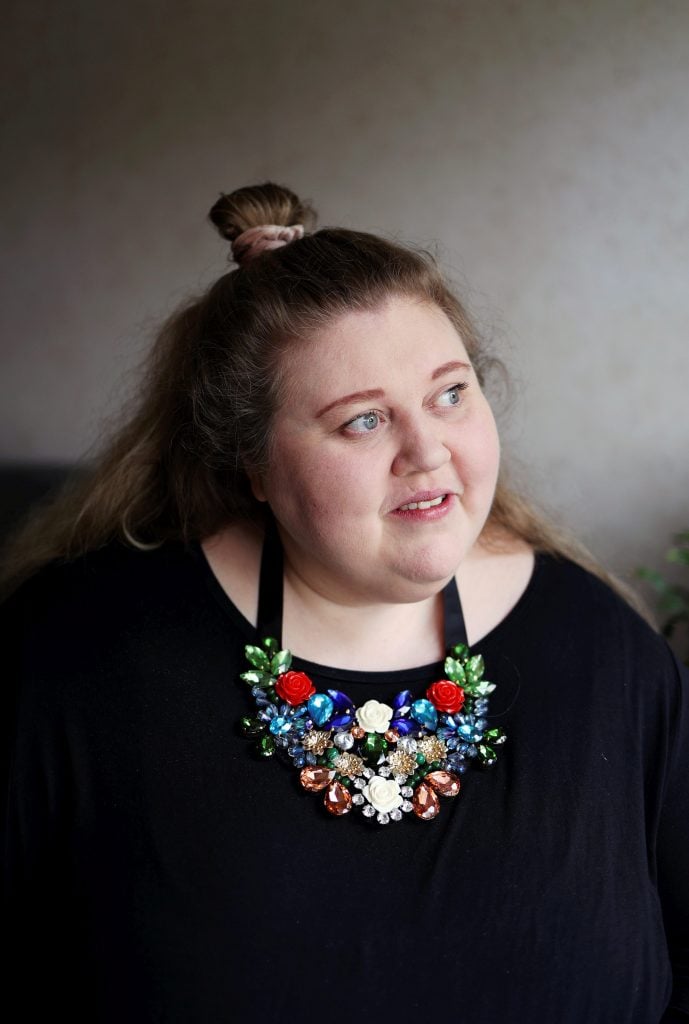
Iiu Susiraja. Photo: Anni Savolainen. Courtesy of the artist.
“Iiu Susiraja: A style called a dead fish” is on view at MoMA PS1, 22-25 Jackson Ave, Queens, New York, through September 4.